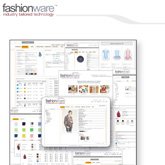PLM: The Next Generation
Efficiency-process software evolves to fit the needs of apparel makers
Product lifecycle management (PLM) software systems have revolutionized fashion and apparel manufacturing by streamlining every phase of the process, from design to delivery. Such systems have allowed apparel makers to trim their production costs while benefiting from quick turnaround, less fabric waste, virtual samples that can be processed from around the world and the ability to track the point of production of a garment at every stage of the process.
Now that PLM has been in use for several years, the system’s innovators are refining the software further, individualizing it to each company’s unique needs— including those of the small apparel maker.
Recognizing PLM’s indispensability in modern production, multiple software companies now offer PLM solutions for a wide range of manufacturing industries, including apparel.
Fair Lawn, N.J.– based Business Management Systems caters exclusively to the fashion and sewn-products industries. New York–based Fashionware and Iselin, New Jersey–based ecVision are two other productionprocess software makers offering PLM technology specific to the ever-evolving needs of companies designing, producing, shipping, and marketing apparel, textiles and footwear.
The right solution at the right time
Since its inception in 1995, Business Management Systems, or BMSystems, has catered exclusively to the needs of apparel manufacturers with its flagship PLM product, VerTex. The company’s current client roster includes women’s contemporary apparel makers Theory, Donna Karan, Elie Tahari, Laundry by Shelli Segal and Ellen Tracy. BMSystems claims it has a 100 percent implementation success record and a 100 percent consumer satisfaction rating.
“Our founding fathers have roots in the apparel industry, and they aspired to create a system that would monitor the entire manufacturing process,” says Karina Kogan, vice president of business development at BMSystems. “But the solution didn’t happen overnight. We went through many, many generations before VerTex was created, and we consider it the most comprehensive industry-specific PLM solution on the market.”
Using the tagline “turning chaos into control,” BMSystems has multiple options for the special needs of smaller manufacturers. “The biggest problem with traditional processes is that the left hand doesn’t know what the right hand is doing,” Kogan says. “With PLM, everyone is working on the same canvas, and there is a continuous, open flow of communication.”
BMSystems offers a variety of programs that are scalable and configurable to the needs of smaller companies. “Our success rate stems from the way we approach our customers —or partners,” Kogan says. “First, we find out what they need; then we create designer-friendly, cost-wise solutions that can be implemented for their business at this time.”
Increasingly, apparel manufacturers are relying on PLM software to help reduce costs. Kogan says the cost to make samples can be astronomical if there is not a system in place to limit the number of prototypes being produced. “When we ask [apparel companies] about the number of samples that are done right the first time, the response is usually, ’Hardly any,’” Kogan says. “Our software can virtually eliminate all that trial and error.”
Kogan says apparel companies of any size should seriously consider incorporating PLM. Large apparel companies, she says, are saving upward of $1 million per year by using VerTex. Kogan says the software accelerates speed-to-market for new products, permanently removes time and costs from internal and supply-chain activities, enables tracking and control of the entire design-through-delivery process, enhances collaboration throughout the product lifecycle, and enables business growth with minimum cost and overhead. BMSystems offers hosting and leasing options for small companies that cannot afford the pricey software, which can cost as much as $100,000.
New York–based Theory—a division of Link Theory Holdings Ltd., which earned $582 million last year—has seen considerable growth in its production since it implemented BMSystems’ software five years ago. Since then, the women’s contemporary apparel maker says it has achieved a 20 percent to 25 percent reduction in cycle time and has shaved at least four weeks off its productdevelopment process. “Communication has improved exponentially,” says Kathie Panzone, business analyst for Theory. “We are all connected, and every department can easily share information entered into the system. Design connects to merchandising, merchandising to production, production to warehousing, etc.”
Production reports that previously took days or weeks to create and circulate in the past can now be accessed and printed at the touch of a button, Panzone adds.
Filling every niche
New York–based Fashionware is expanding on the evolutionary aspects of technology with its signature product, Fashionshare, and the “Software as a Service” (SaaS) model. According to the company, SaaS alleviates many of the financial demands and changing logistics inherent to standard PLM.
“When you roll out a traditional PLM program, you need much more than just the software,” says Paul Friedman, president of Fashionware. “You often need all-new, upgraded hardware, an IT staff, and ongoing training and support.”
SaaS is a 100 percent Web-based technology; users can access it from anywhere in the world 24 hours a day. Fashionware hosts SaaS, and manufacturers subscribe via a monthly fee that is calculated per user, resulting in a sliding scale that accommodates companies of any size. In 2007, prices were $350 per user per month for one to 10 users and as low as $225 per user per month for 41 to 50 users. These prices included set-up, configuration, maintenance, upgrades, training and end-user support.
“With SaaS, new software releases are instantaneously available to our customers,” Friedman says. “They’ll never be in a position of investing substantial capital in a system just to have a new, upgraded version come out six months later.”
Fashionware’s primary client is New York–based outerwear giant S. Rothschild & Co., which has been in business more than 120 years and is licensed to produce sportswear and outerwear for several major labels, including DKNY, Via Spiga and Larry Levine.
“We have modeled SaaS with ’industry best practices’ in mind,” says Friedman, who— like his partner, Sandra Muriel-Colorado—has more than 20 years experience in the apparel industry. “We wanted to create an expandable, easy-to-use system so that tech could be left to the tech people and apparel could be left to the apparel people.”
The result, Friedman says, is a system that has been widely embraced for its ease of use. “We modeled the screens based on what people are used to seeing, with pull-down menus and navigation bars. Our goal is to build industry-specific, flexible programs that can be continually tailored to each individual user,” he says.
Going down the road
Iselin, New Jersey–based ecVision is a company ready to take the PLM process to the next logical level: to the supply chain. ecVision integrates PLM and supply-chain execution (SCE) through XpressCommerce, a Web-based product lifecycle execution (PLE) solution.
Gary Barraco, ecVision senior manager of alliance development, says XpressCommerce uses a “one-click” system that brings the distributors and retailers into the PLM circle. The software allows users to complete PLM tasks such as line planning, sourcing, pricing, and expediting purchase orders for materials and labor. The features then progress to interface with SCE tasks, including tracking garment production, scheduling quality inspections, coordinating with customs and compliance requirements for all involved countries, and facilitating all shipping through to the product’s final destination.
“Forty-eight percent of retail organizations have a lack of critical supply-chain process visibility,” Barraco says. “When you add in the tasks associated with the supply-chain execution process, you compound the frustration level felt by retailers who are often left out of the loop. PLM and SCE tasks are historically managed by independent systems and owned by different departments. A product lifecycle execution system can bridge that last gap of the product lifecycle, getting the product to market.”
ecVision has been working with Bon-Ton Department Stores since 2006, implementing XpressCommerce into the retailer’s systems. Bon-Ton, with 280 department stores nationwide that offer both major brands and private-label apparel, is utilizing ecVision’s comprehensive order-management and tracking system to collaborate with nearly 300 international factories and agents.
Elizabeth Stull, Bon-Ton’s director of global sourcing, says: “Solutions that provide collaboration and visibility functionality like ecVision XpressCommerce enable retailers to build strong, trusting relationships with their suppliers. The ability to interface in real time with factories and offices on the other side of the world improves our ability to deliver quality, fairly priced products to our customers.”
In addition, ecVision designed XpressCommerce using flexible, configurable integration elements that allow for the application to be implemented in stages, thus ensuring its compatibility with existing systems. Companies can run small implementations immediately while developing a fully comprehensive system for long-term use.
“Apparel manufacturing and distribution requires a vast network of collaboration,” Barraco says. “New technology helps create an environment where all parties can openly communicate about cost, product and service issues, fostering greater collaboration through every phase of the lifecycle and distribution process.”
























